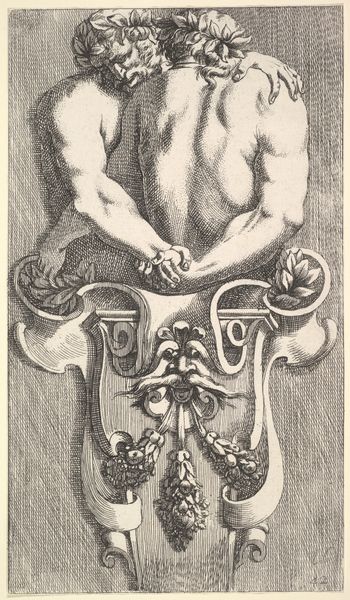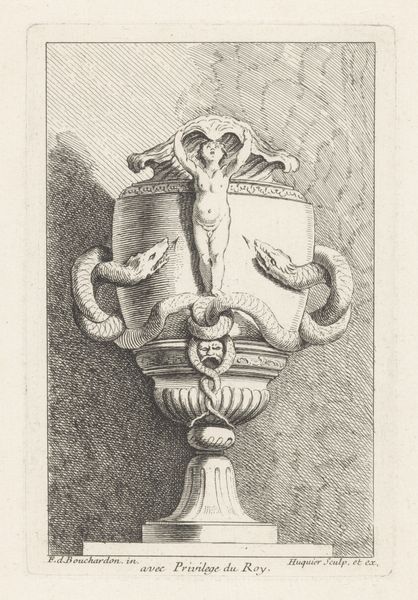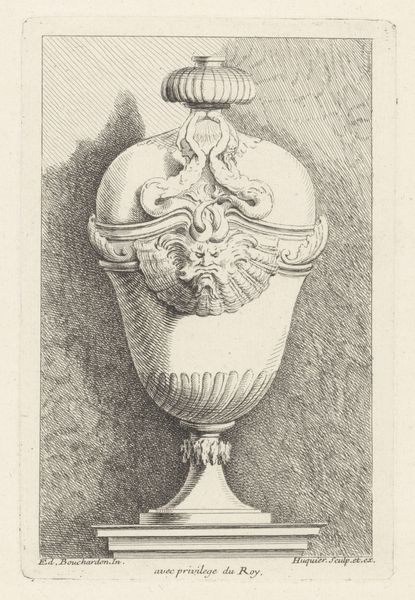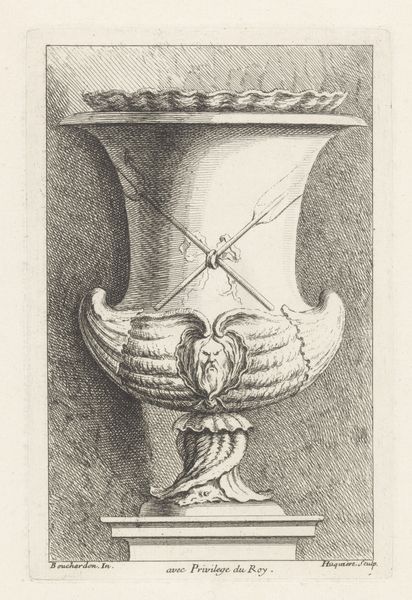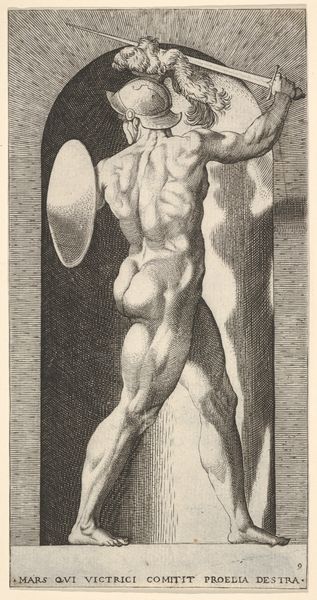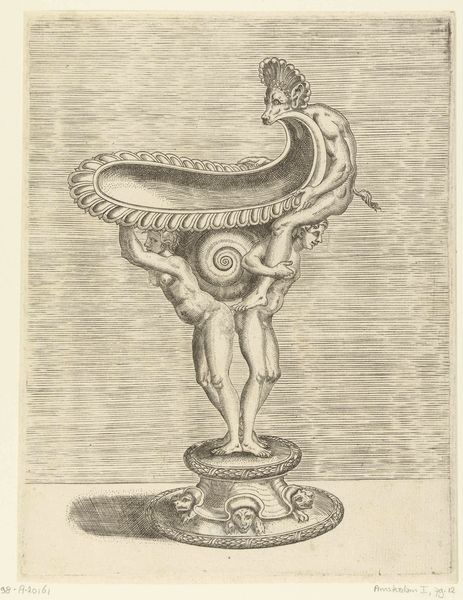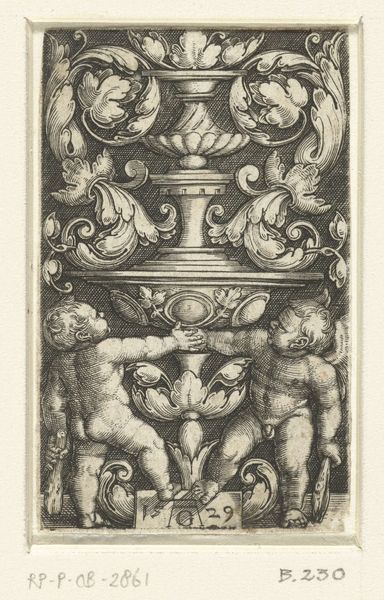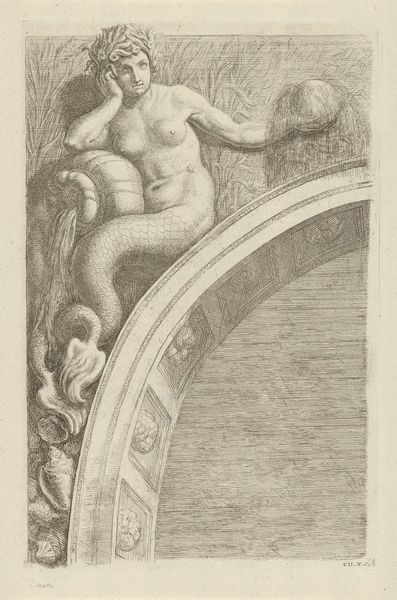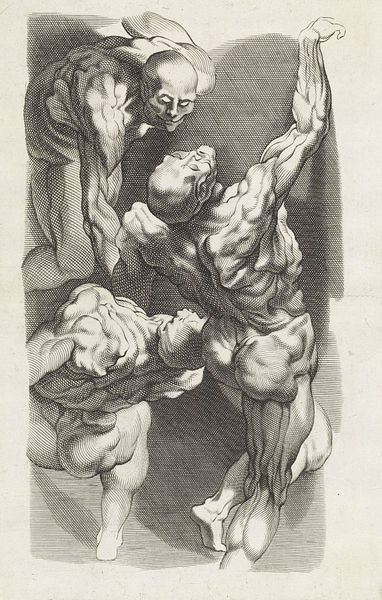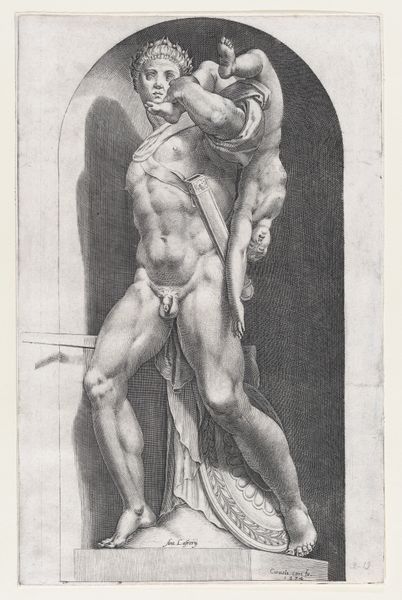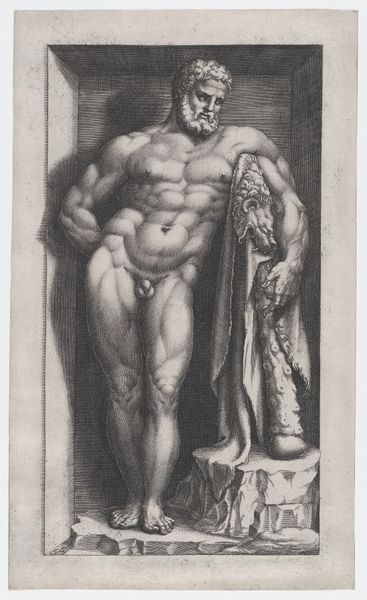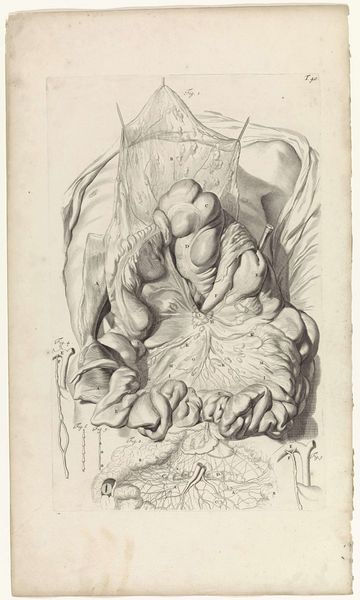
Design for a Term with Two Bacchic Figures, from: Curieuses recherches de plusieurs beaus morceaus d'ornemens antiques et modernes (...) 17th century
0:00
0:00
drawing, print, engraving
#
drawing
#
baroque
# print
#
classical-realism
#
figuration
#
history-painting
#
engraving
Dimensions: sheet: 9 3/8 x 5 3/8 in. (23.8 x 13.7 cm) plate: 9 1/16 x 5 1/8 in. (23 x 13 cm)
Copyright: Public Domain
Curator: Here we have a 17th-century engraving by Jean Le Pautre entitled, "Design for a Term with Two Bacchic Figures." It's part of a larger series called "Curieuses recherches de plusieurs beaus morceaus d'ornemens antiques et modernes." Editor: Intensely classical, isn't it? The musculature is quite powerful for an engraving, but those faces… quite forbidding. Almost grotesque. Curator: Grotesque, maybe, but appropriately Bacchanalian. These are followers of Bacchus, the god of wine and ecstasy. Notice the wreath of grapes and vines adorning their heads—hallmarks of Dionysian revelry. Editor: The material execution itself is quite captivating. It’s a print, so mass production was absolutely the purpose, right? It would have served as inspiration for other artisans in the creation of, well, other terms! And I am compelled to see in what precise material, this engraving will finally reappear, maybe in plaster, maybe in marble? Curator: Exactly! Le Pautre disseminated his designs to a wide audience of artisans and craftsmen. The image depicts more than just inebriated characters. This is about control and manipulation of classical motifs for a booming market, and the clever design would lend itself to diverse applications. Editor: So, considering the material then, it's function would dictate it to eventually serve an ornamental function for perhaps garden designs or architectural embellishments. So these "terms"– the kind we're seeing depicted– these are not only artworks themselves but components, part of something greater. Curator: Precisely. The design emphasizes movement—the intertwining figures, the swirling acanthus leaves. Le Pautre created an object of desire that blends classical learning with a distinct Baroque dynamism intended to meet consumption demands. It's also interesting how a tassel at the bottom suggests how sculpture integrates domestic, even intimate, spaces. Editor: Yes, this combination truly reveals both continuity and shift in the symbolic repertoire. From classical antiquity re-imagined through Le Pautre's hand in the 17th century to a modern museum installation today. History never ceases to reshape what these Bacchic figures could mean to us. Curator: And I am left to ponder: How will Le Pautre’s images resurface tomorrow? The endless chain of inspiration and reproduction. Editor: Absolutely, seeing them here invites us to wonder at this legacy – where might such potent figures reappear next, bearing their timeless and compelling messages.
Comments
No comments
Be the first to comment and join the conversation on the ultimate creative platform.
